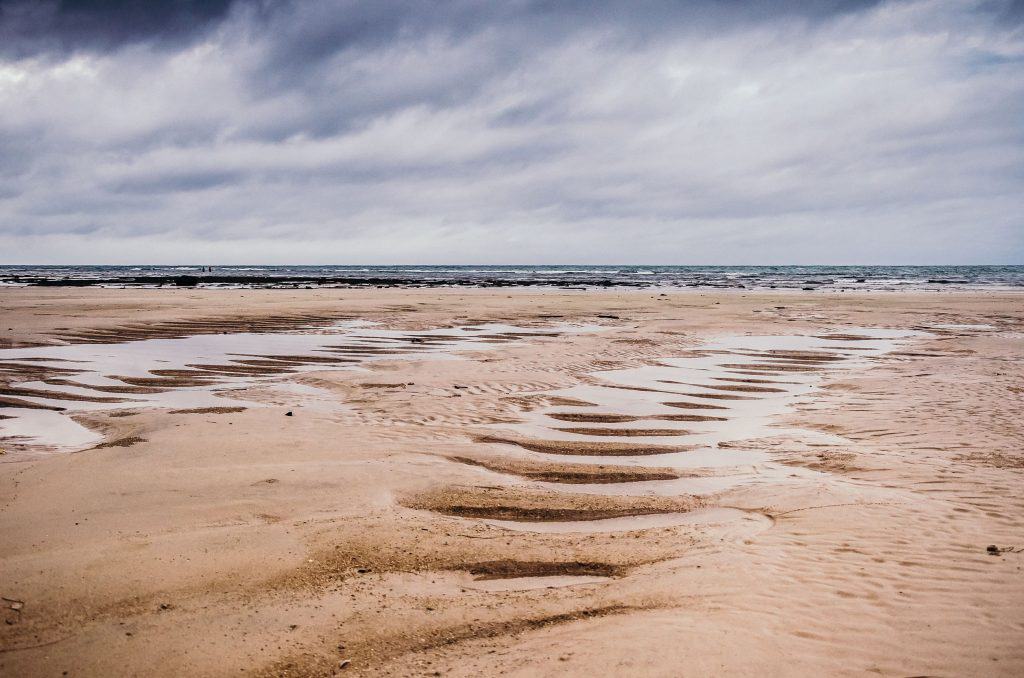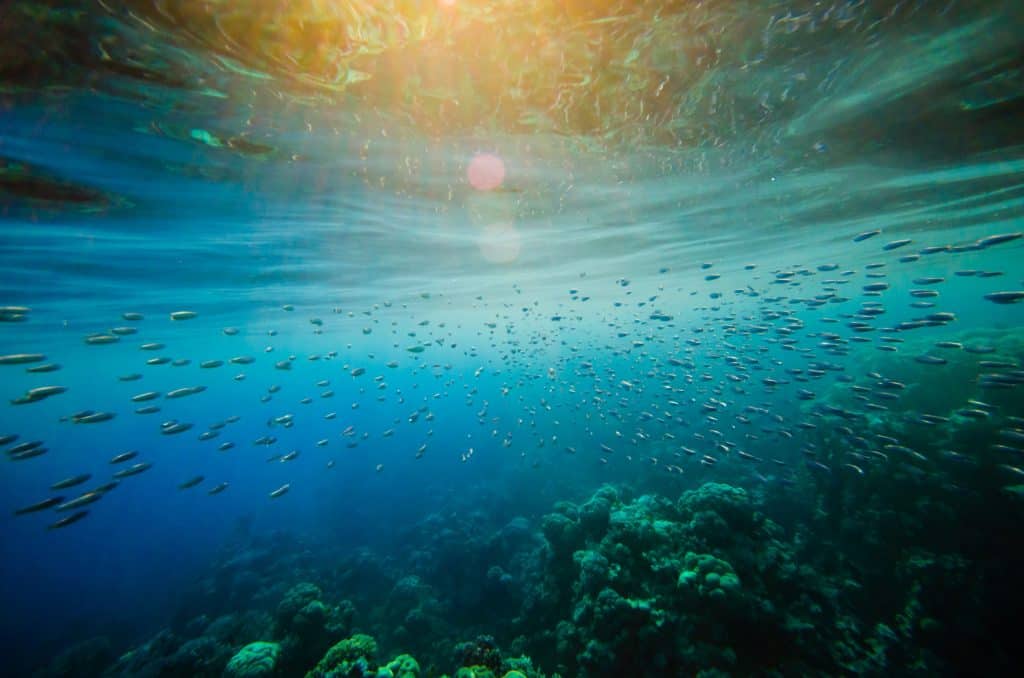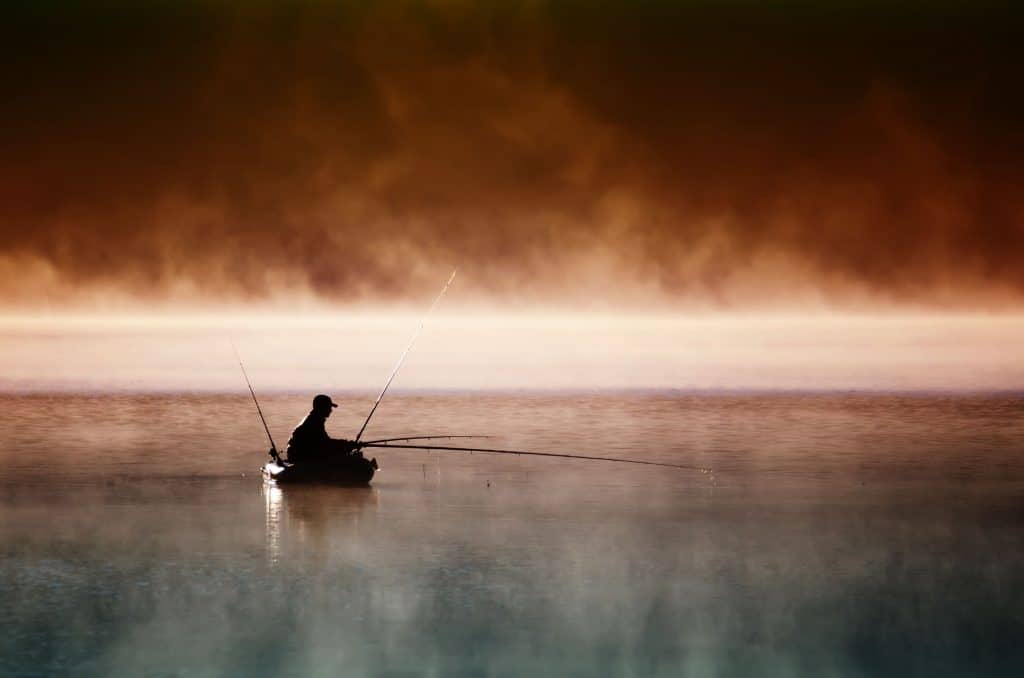
Fishing has a lot to do with the movement of the water. This usually means currents, but tides probably have more to do with success while fishing than the currents themselves do.
Is it better to fish during low or high tide?
Neither the high tide nor the low tide is the best time to fish. Instead, look to fish during the middle periods, between the flooding or falling tides. The high and low points are not good times to fish.
Tides
Water has tides because of the gravitational pulls of the moon and Earth, as well as a little interference with the sun’s gravity. The moon has the greatest influence on the water as it is a lot closer to the earth than the sun. The moon pulls the water towards it as it orbits the Earth, causing the tides to occur.
Because they are periodical, meaning they occur regularly, the tides can be calculated and predicted very accurately. High tide occurs twice a day, as does low tides. Knowing when these times are will be able to help you with catching more fish.
Tides can change a lot of things, such as the currents in surrounding waters, as well as the feeding times of fish. Tides can also change where you fish, as some places that you usually fish will either have too much water, and be too deep, or have no water, and have no fish.
There are a few different factors that tides bring in when looking at it as a way of catching fish. Fish are very particular creatures, and will only be active if their preferred circumstances are present. As with most things, each species of fish has its own set of particularities.
Temperature
Temperature heats or cools things down, and is usually an effect of the sun. If the temperature is hotter and warms the rocks in the water up, then when the tide retreats, the shallower waters will heat up faster, meaning that the deeper waters can warm up and the fish will become more active.
The opposite is also the same. If the temperature is
Most fish will only come to the shallower water when there is a specific temperature going on, and the brightness is also a factor. Because of this, fishing under shade during warmer days can also be beneficial.
Currents

Currents have a huge impact on where the fish will be and where they are going. Because fish usually try to conserve their energy, they will very rarely fight against the current. For best results, wherever you are, fish with the current.
The fish, as the energy conservers that they are, usually are not cruising directly with the current. They will be waiting on the edges of the currents ready for food to come by and hit them quickly. Fish closer to the edges of a soft current and you’ll be closer to the fish.
But just because the current is hard and rough doesn’t mean that you shouldn’t fish it. Overlooking any fishing hole can lead to a missed opportunity.
Tides create their own little currents going perpendicular with the usual ‘currents’ people talk about. The falling tide will bring the fish down to the deeper places, while the flooding tide will bring the current up closer to the banks.
High Tide
The highest point during high tide is not a good time to be fishing because of the lack of movement during so. The water will be more stagnant, as will the fish be. Unmoving and still water turns them off, as they do not feel a need to eat.
Fishing Rising Tide
The rising or flooding
This can help out the angler, though. By using the tide to you advantage, you can be able to ambush the fish as they leave their holes, or get your hooks closer to the fish as they begin to move.
Low Tide
Low tide has many similar reasons for not being the best time to fish. The serious lack of both water movement and water will drive the fish to better places. Low tide will not be a good time to fish because there will be less fish around to catch.
Stagnant water, as well as lower levels of water, can be enough to pus the fish away for a while. They will also not want to eat if there is little movement.
For fishing during low tide, there are a few tips that I’ve found that work very well. The water will still be flowing to places that are deeper. These places will carry fish food towards them, which will attract fish towards it.
Concentrate your fishing efforts in these places. The fish will be willing to feed if there is a lot of food there for them to eat. This means that if you’ve picked a good location, you will be able to catch a lot of fish in a short amount of time.
Fishing Falling Tide
A falling tide is when the water levels of the ocean or river begins to fall. Its name is pretty self-explanatory. As the water retreats back down, the water will suck in insects and small plant fragments that the fish enjoy eating. This makes it a great time to drop a line in the water with a jig, lure, or bait.
The water will move it towards the center and it will probably catch the eye of a hungry fish. If you’re lucky, it’ll also catch the mouth of a fish.
Falling tides are better for fishing because the bait will be carried out to the deeper parts of the water and will get closer to the fish. The current will be stronger as more water pushes into the center, which will only turn on the fish’s feeding frenzies.
Oceans
Oceans have very dramatic tides. While rivers tides can have a difference in feet, and lakes in inches, oceans can have a difference between high and low tides be miles apart. This can drastically change the plans of fishing if there isn’t enough information gathered beforehand.
Tides control where the nutrients will end up through subtle and darastic changes to the current. Fish will congregate around these locations, and finding these locations necessitates knowing what time the tides will be at.
There is a reason that fishermen of all ages fish the sea, though. The sea is full of fish, and most are delectable. The urge to deep-sea fish, or just pier fish can touch anyone.
Rivers
The best fishing I’ve ever done was on a river during a falling tide. I caught many a bass and a few trout as I let my lures drift out to the middle of the deep and began reeling them back.
The feeding frenzy of river-dwelling fish can be intense. I’ve had days where I go fishing and I can see the fish eating and biting anything that moves and had two types of experiences. One I catch a ton of fish and spend more time trying to de-hook fish than having the line wet.
I’ve also had experiences with fishing at feeding times where I can see those feeding fish, but there
Lakes and Weather Patterns

Lakes have tides, but since they are usually so small, there isn’t much difference between low and high tides. Because of this, there are a lot of other factors that are taken into consideration a lot more. Some of those variables include different types of weather.
Fish are hard to please when there is a specific type of weather going on, There are a few that inhibit the angler from fishing succesfully, but there are a few that can act as a fishing catalyst.
Cold Fronts
The weather just before a cold front, or a storm, can be a great time to fish. The decrease in pressure is something that most fish can feel and the will begin to feed more. Because of this, there is a very good window between the beginning of the front to just before the storm’s approach.
Once the storm hits, there will be an increase in some fish, but there will also be an increase in other types of fish. After the storm, there will usually be a warm front that will decrease all types of fishing. High levels of air pressure disturb the fish.
Rain
The fish will become more aggressive as it rains, which will make things better for you, the fisherman. The rain breaking the surface makes it seem like there is more food falling into the water, so they will bite mostly anything. The broken surface is also a good thing as it will hide both you and your rod from the fish.
The fish will probably come up closer to the top of the water, so using topwater lures and baits will probably give off better results. The rain will look like falling insects, or food, to the fish. They’ll want to get closer to the top anyways.
Another tip to fishing in the rain is to move more. Fish are more likely to roam during rainstorms, so every few casts change slightly the direction you face, or where you stand to cast. Reeling in should also be done a little faster, but be careful of how much faster you reel in. You don’t want to out swim the fish.
Rain can also change where you should fish. Any natural water runoffs or man-made drains will be places of nutrients, especially if its clean runoff and not dirty. Smaller fish will be attracted to these places, and in
Clouds
Clouds act as great cover from the sun for the fish. Usually, fish don’t like bright days, but they love the heat. For most of the time, if its warm enough, fish will bite more and be more active during cloudy days.
Cold days will make the fish more lethargic, so there is a small equilibrium window where the water is warm enough for fish to want to move, and its shady enough that the fish are willing to come further up to feed.
Sunny Days
On a day with a lot of sunlight, fish are more likely to go to deeper waters. This means that you’re going to have to change your fishing style just a little bit. Cast out further and wait for your lure or bait to fall a long time.
Break out your crankbaits and get one down deep where the fish will be. Make sure it doesn’t move too fast, so that the fish can still catch it as they conserve their energy.
Visit our Fishing Page for all your Fishing Needs!
Related Content And Questions:
If you’ve ever lost a fishing hook (and I know I have), then you might be wondering what happens to it. I did some research to find out what happens after a hook is lost to the river.
Is surf fishing better at high tide? It is easier to cast out further during high tide. This will help with getting to those deeper waters where you want to get your hooks. But different locations will have fish with different feeding habits.
What is the best time to fish for redfin?The best time by far is to fish around low tide as they will come up in the shallower waters and their top fin will sometimes be visible. That’s kind of a rile of thumb for fishing all species of fish, though; loser to low tide.
